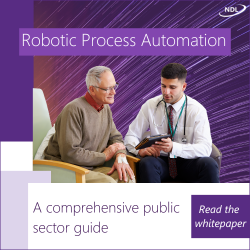
Researchers at the University of Glasgow have developed a way of using satellite data to monitor river flows in managing flood risk.
The team from the School of Geographical and Earth Sciences has outlined the approach, which analyses video footage captured from orbit, in a paper published in the Geophysical Research Letters journal.
The university said this could help governments and land managers to improve their flood predictions and mitigate the effect of flooding on communities.
Currently, river flows are most often measured using stream gauges which take stock of the volume of water – discharge – flowing past a particular point at every second. These are expensive to install and maintain, especially in remote areas.
Video sensors on satellites can provide a much broader visual overview of large areas to monitor geographical changes over time and provide real time information on flooding.
New techniques
Until now it has not been possible to use satellite data accurately for the purpose, but the research team has developed techniques to track and analyse visible surface features between frames in the video footage to estimate the speed and flow of a river.
These were deployed in measuring the discharge along a 12-mile section of the Darling River in Australia from a Chinese satellite in February 2022. The flow estimates were combined with detailed elevation maps to estimate the discharge to within 15% of the measurements taken by stream gauges.
PhD student Christopher Masafu, the paper’s corresponding author, said: “Close to 30% of the world’s population is exposed to flood risk and threats to the availability of fresh water. Despite that, many rivers don’t have stream gauges or other measurements in place, which limits how much we can learn about their flows and any potential risks they may pose to local populations during heavy rains.
“Satellites can be deployed anywhere around the world relatively cheaply and easily compared to the cost and effort of physically gauging all of those unmonitored rivers. However, their potential to measure river flows hasn’t been fully shown until this research, which is a really exciting breakthrough.”
High vantage point
His PhD supervisor, Professor Richard Williams, commented: “Satellites give us the ability to monitor rivers in real time from a high vantage point, and being able to watch them swell and flood during heavy rains can be very helpful in emergencies.
“What this technology allows us to do is mine that real time video monitoring for even more useful information. That could help provide improved forecasts and warnings to help with on-the-ground planning during challenging situations.”
The paper’s third co-author, Dr Martin Hurst, added that there are limitations in the work done so far, notably that the data can only be collected when there is no cloud cover.
“However, it’s a big step towards making satellite footage a valuable tool for measuring the discharge of rivers around the world in addition to traditional stream gauges,” he said. “We’re looking forward to developing the technique further in future research.”





